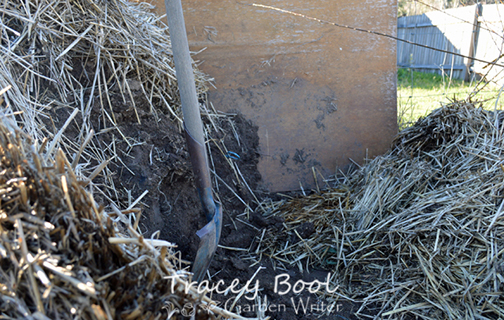|
Creating Compost from Garden and Household ‘Waste’
(23 May 2013) Call me potty, but creating rich organic matter from household excess is a wonder of nature you can’t ignore. Garden compost is the process of breaking down household and garden ‘waste’ into a nutrient-rich soil improver using minimal output (that is, human labour) for maximum gain (enviously abundant, healthy plant life). The most exciting thing is, anyone can compost, on any scale - your compost can be equally as elaborate or simplistic as you like – and unlike baking a cake, you can tweak the batter after it’s been put in the oven to bake without ending up with something even a Beagle would turn its nose up at. How you compost and what you will compost in will largely depend on time and space, what style of garden you have, and whether you need to consider children and pets. Purpose-made bins can be readily purchased in a variety of shapes, sizes and types – you can even use a Bokashi bin if you live in an apartment and don’t have many scraps (available online). Alternatively, you can make your own using products such as pallets, chicken netting, recycled timber (non-treated of course), bricks, plastic garbage bins with the bottom cut out, bales of straw, or simply out in the open – it really is limited to your imagination. You can compost either aerobically or anaerobically, that is with or without air. Aerobic composts rely on volume, a good mix of carbon and nitrogen-rich ingredients, and regular turning to generate heat (that’s where we come in - it’s a great way to warm up in this bitter weather). Anaerobic composts, on the other hand, still require a complimentary mix of carbon and nitrogen ingredients, but don’t need to be turned regularly. Clearly this method of composting is not labour intensive but it is a slower process; depending on conditions, it could take up to five months to have a garden-ready product, as opposed to the aerobic method, which can be ready in as little as three weeks. Anything which was once living and hasn’t had sodium added to it can be composted. In saying that, avoid using dairy and meat products if you are composting using the cold method, have pets, or if you haven’t got the hot method down pat (the potential side effects will assault your senses and attract vermin). As a guide, layer approximately two parts carbon product (such as deciduous leaves, shredded paper with black ink only, hair, straw, untreated sawdust) to one part nitrogen (kitchen scraps, coffee grounds, green waste from the garden etc.) until the bin is full. Cutting ingredients into smaller pieces significantly speeds up the process. And if you don’t have a lot of ingredients and you want to get things moving, you can turn the pile as you go. I increase the amount of compost I produce by collecting coffee grounds from my local café, deciduous leaves from roadsides, shredded paper from work, and veggie scraps also from work and my lovely neighbours. In fact, I now produce around 300 litres every month compared to 200 litres in 6 months. If you find your compost smells unpleasant and is too wet, add more carbon and a little Dolomite or garden lime (optional), and ensure it is adequately ventilated. If you it is dry and lifeless, add more nitrogen ingredients, add moisture, and give it a good mix. In order to create and maintain heat when composting aerobically, you will need to turn it every few days, but this also can vary depending on volume and ingredients. When you turn it and question whether you’ve been teleported to a thermal spring in Jindabyne because there is so much steam around, and there are concerns you may brand yourself with the fork tines if you hold them for more than a few moments, then you are well on your way to creating nutritious, soil improving compost. |

